Guide to Narrow French Doors (Internal and External)
Table of Contents
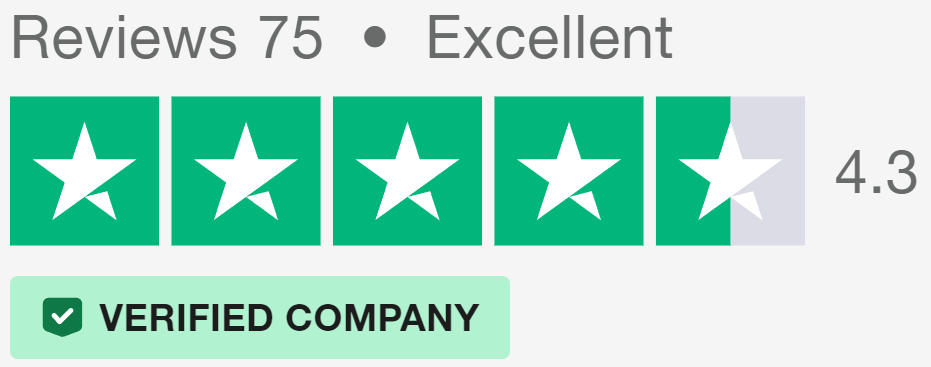
What Makes French Doors “Narrow”?
French doors have long been a favourite among homeowners seeking to bring light and elegance into their spaces. But what exactly sets narrow French doors apart from their standard counterparts?
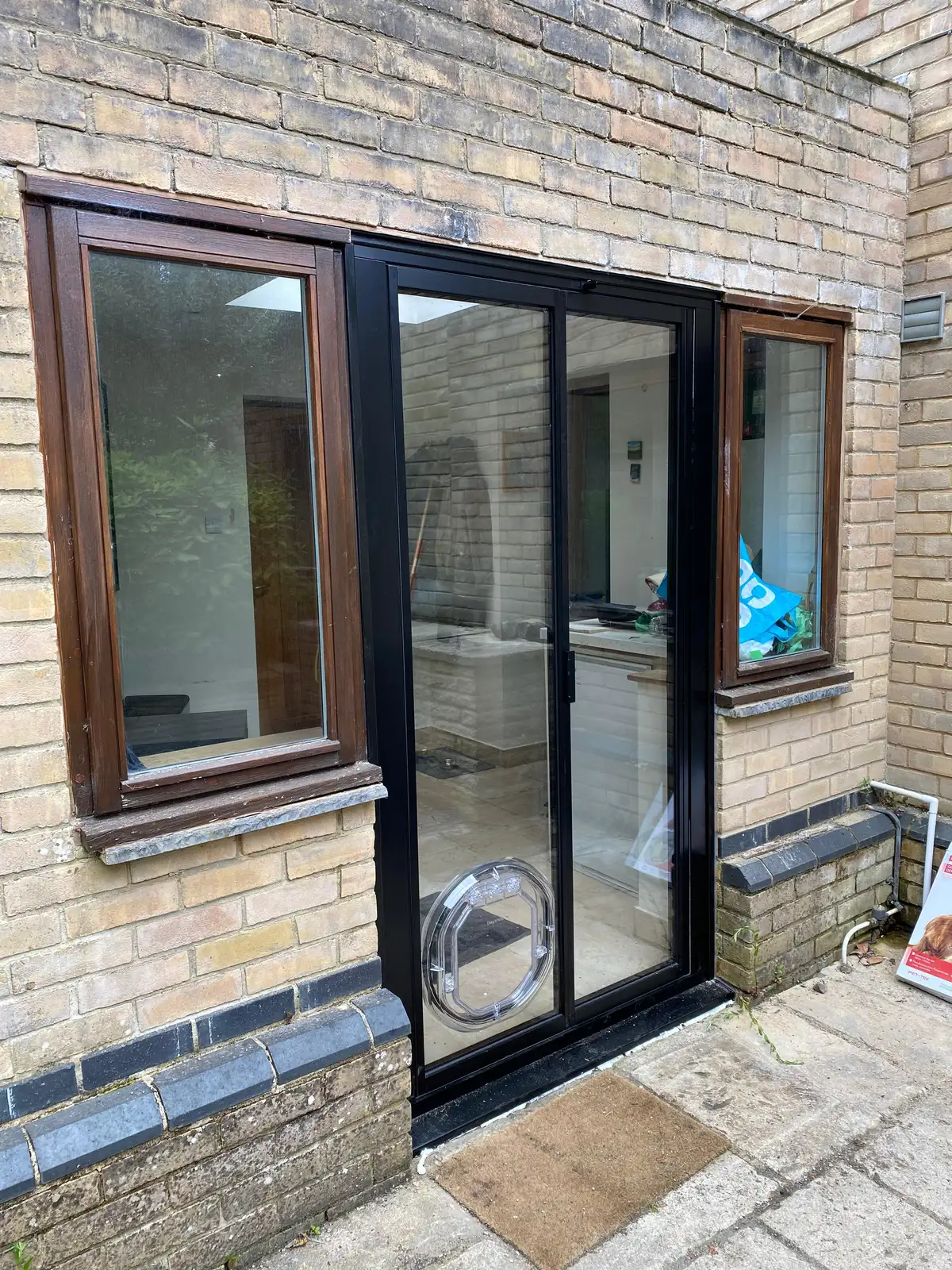
Standard vs. Narrow: Size Matters
Typically, French doors range from 30 to 36 inches in width per panel. Narrow French doors, however, often measure between 20 and 28 inches per panel. This reduction in size allows for installation in tighter spaces without sacrificing the classic French door look.
In older British homes, where space is at a premium, narrow French doors offer a practical solution. A Victorian terrace in London might have openings as slim as 48 inches, perfect for a pair of 24-inch narrow exterior French doors. These slender options maintain the charm of traditional French doors while fitting snugly into compact areas.
The Space-Saving Appeal
Narrow internal French doors shine in homes where every inch counts. Picture a cosy cottage in the Cotswolds – its small rooms benefit from the light-sharing properties of French doors without losing valuable floor space. In urban flats, slim narrow French doors can separate living areas from balconies, creating a sense of openness in limited square footage.
One of the key advantages of these French doors is their ability to brighten up cramped areas. Even in a narrow hallway, these doors can turn a dim space into a light-filled corridor. By opting for narrow interior French doors between rooms, homeowners can improve the flow of natural light throughout their property.
For external applications, narrow exterior French doors offer a compromise between solid walls and full-width glass installations. They provide a connection to the outdoors without the need for extensive structural changes. In a terraced house with a small garden, these doors can frame the view and offer easy access without overwhelming the limited outdoor area.
Navigating the Narrow French Door Market
Narrow Internal French Doors
Narrow internal French doors are ideal for connecting rooms or closing off spaces without blocking light. These doors might separate a study from a living room, allowing light to flow between rooms. French doors in this setting often feature clear glass panels to maintain an open feel.
For bedrooms or bathrooms requiring more privacy, frosted or textured glass options are available. These allow light transmission while obscuring the view. Some homeowners opt for narrow interior French doors with blinds integrated between the glass panes, offering adjustable privacy and light control.
Narrow Exterior French Doors
When it comes to exterior applications, French doors must balance aesthetics with weatherproofing and security. Slim narrow French doors leading to a garden or patio should be robust enough to withstand British weather while still looking elegant.
Materials vary, with uPVC and aluminium being popular choices for their durability and low maintenance. However, timber options remain favoured for some types of period properties, offering authentic charm and the ability to be painted in a wide range of colours.
Materials
The choice of material for narrow French doors can greatly impact their appearance and performance. Traditional wooden doors offer classic appeal and can be painted or stained to match any decor. They’re particularly well-suited to older properties where maintaining character is important.
uPVC French doors provide excellent insulation and require minimal upkeep. They’re available in a variety of finishes, including wood-grain effects that mimic the look of timber. For those seeking a modern touch, aluminium narrow exterior French doors offer slim profiles and superior strength, making them suitable for larger glass panels.
Composite doors combine the benefits of different materials, often featuring a wooden core with a weather-resistant exterior. This option can be particularly effective for narrow French doors in exposed locations, offering the best of both worlds in terms of aesthetics and durability.
Installation Challenges and Solutions
Fitting narrow French doors can present unique challenges, especially in older British homes with irregular openings.
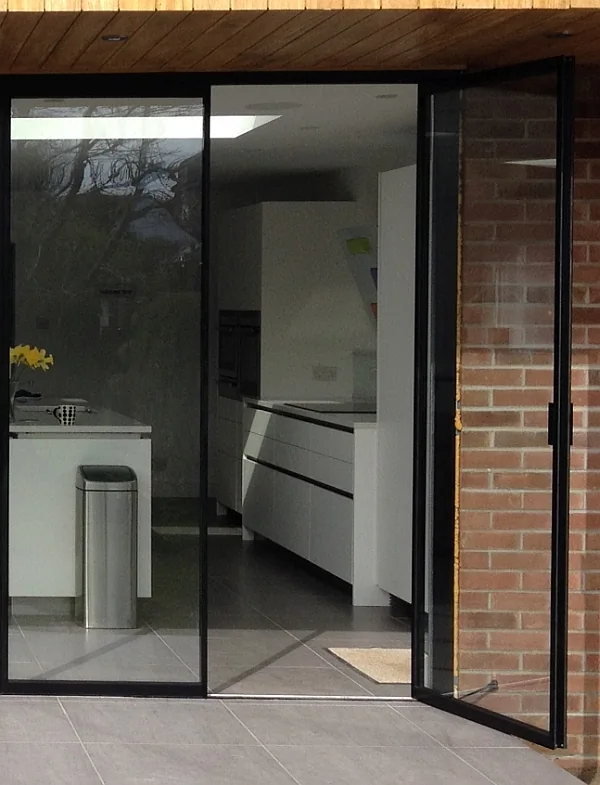
Measuring for a Snug Fit
Accurate measurements are vital when installing French doors. Even a few millimetres can make the difference between a perfect fit and a troublesome gap. Start by measuring the width at three points: top, middle, and bottom of the opening. Use the smallest measurement to ensure your French doors will fit.
Height measurements are equally important. Check from the sill to the top of the frame on both sides and in the centre. For narrow exterior French doors, pay special attention to the threshold height to prevent water ingress. Remember to account for any floor coverings or adjustments needed to create a level surface.
Dealing with Uneven Walls
Many period properties in the UK have settled over time, resulting in out-of-square openings. When installing narrow interior French doors in these situations, you might need to use shims to create a plumb and level frame. In some cases, minor adjustments to the surrounding walls may be necessary to achieve a proper fit.
For French doors in older buildings, consider using adjustable hinges. These allow for fine-tuning after installation, helping to compensate for any slight irregularities in the opening. In listed buildings or conservation areas, consult with local authorities before making any structural changes to accommodate new doors.
Styling Your Narrow French Doors
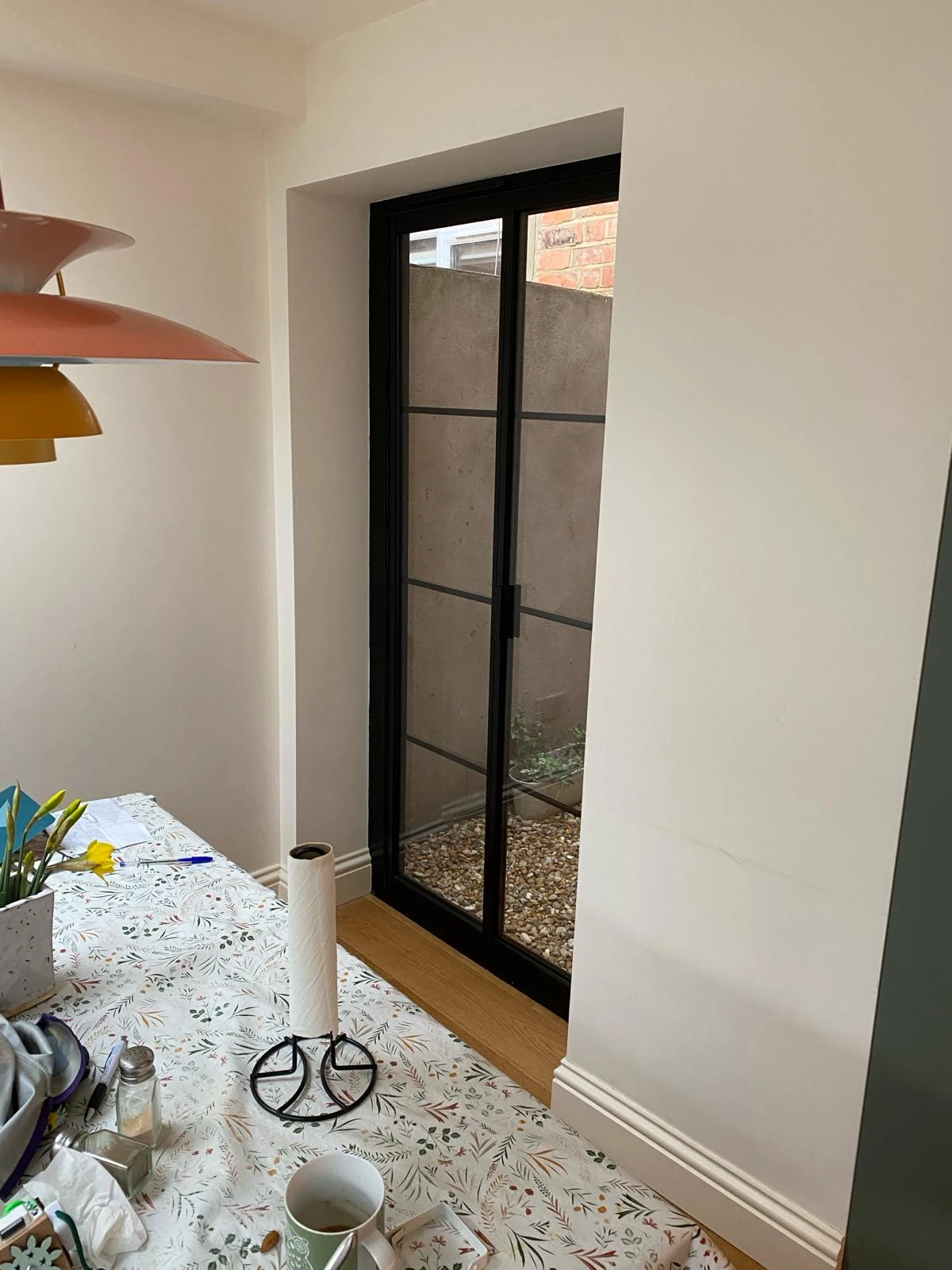
Colour Choices for Visual Impact
The colour of your narrow French doors can dramatically affect the overall appearance of a room. White remains a popular choice for narrow interior French doors, offering a clean, classic look that brightens spaces. However, don’t shy away from bolder options. Deep blues or forest greens can add character to slim narrow French doors, turning them into a focal point.
For narrow exterior French doors, consider colours that harmonise with your home’s exterior. Soft greys or warm creams can work well on period properties, while sleek blacks or charcoals suit more contemporary designs. Some homeowners opt for different colours on the inside and outside of their narrow French doors, allowing for cohesion with both interior and exterior colour schemes.
Hardware That Fits the Bill
Slim handles and locks are available that complement the proportions of these doors without overwhelming them. Brushed nickel or chrome finishes offer a modern touch, while brass or oil-rubbed bronze can add warmth and traditional charm.
For narrow French doors in tight spaces, consider flush handles that sit close to the door surface, reducing protrusion into the room. Magnetic catches can be a useful addition, helping to keep the doors securely closed without bulky locking mechanisms. When selecting hardware, ensure it’s appropriate for the door’s location – exterior narrow French doors require more robust, weather-resistant options than internal ones.
Dressing Narrow French Doors
Window treatments for narrow French doors should balance privacy needs with the desire to maintain light flow. Sheer curtains can soften the look of narrow interior French doors while still allowing light to filter through. For a more structured appearance, consider Roman blinds that can be neatly stacked when open, preserving the clean lines of the doors.
Narrow exterior French doors might benefit from heavier drapes that can be drawn to improve insulation during colder months. Look for curtain rods that extend beyond the door frame, allowing the curtains to be pulled completely clear of the glass when open. This approach ensures you can enjoy the full view and light provided by your narrow French doors.
For a minimalist approach, consider film applied directly to the glass of your narrow French doors. This can provide privacy without additional window coverings, and comes in a variety of patterns and opacity levels. It’s a particularly good solution for narrow French doors in bathrooms or ground floor bedrooms where privacy is paramount.
The key to successfully styling narrow French doors is to consider their proportions and how they interact with the surrounding space. Whether you’re working with narrow exterior French doors leading to a garden or slim narrow French doors connecting interior rooms, thoughtful colour choices, appropriate hardware, and clever window treatments can help these doors become a standout feature in your home.
An Alternative to Narrow French Doors: Slide and Fold
While narrow French doors offer a classic solution for tight spaces, slide and fold doors (also known as slide and swing doors or slide and pivot doors) present a modern alternative worth exploring. These innovative systems provide flexibility and space efficiency, making them an attractive option for many.
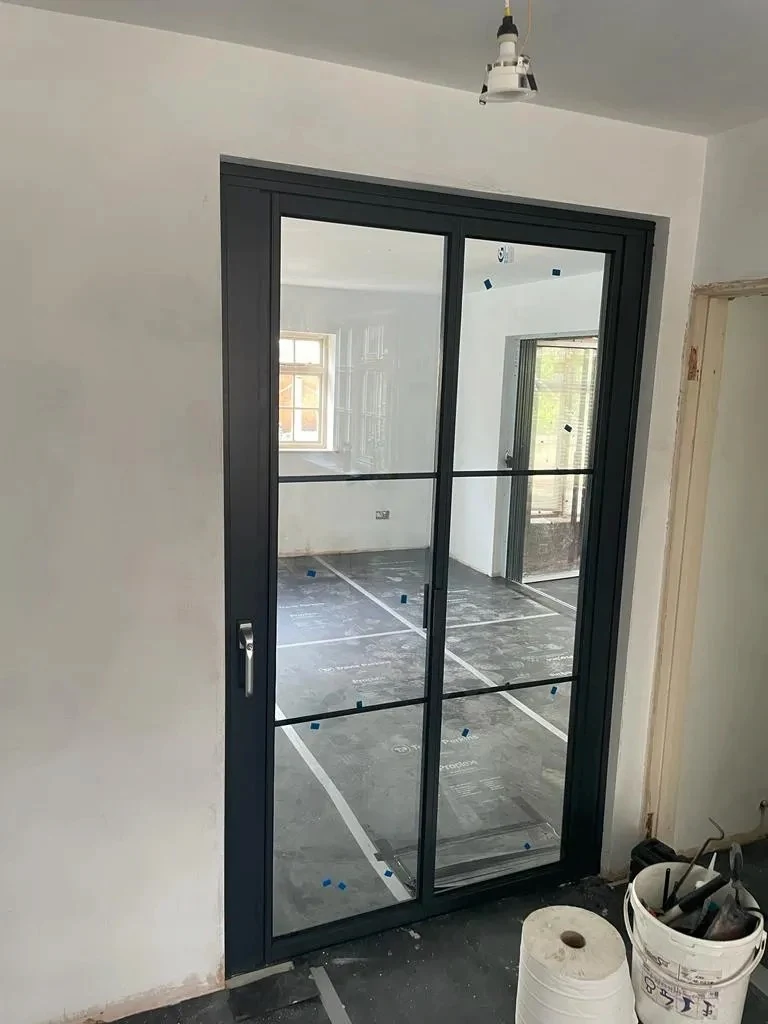
How Slide and Fold Doors Work
Slide and fold doors operate on a track system that allows panels to slide. At one end, they can be folded to open up the entire opening. This mechanism is ideal for both narrow openings and much larger ones, as the number of panels can be varied. As with French doors, they can be fully opened or partially opened.
In narrow openings where slim narrow French doors might be considered, slide and fold doors can offer a sleek profile when closed and maximum accessibility when open. The panels of slide and fold doors are often slimmer than those of traditional French doors, allowing for larger glass areas and potentially more light ingress.
Space Efficiency Compared to French Doors
One of the main advantages of slide and fold doors over narrow French doors is their space-saving design. While narrow interior French doors require clearance for the swing arc, slide and fold systems fold flat against the wall. This feature is particularly useful in compact rooms where every inch of floor space counts.
For example, in a snug British kitchen leading to a small patio, slide and fold doors can replace narrow exterior French doors without impinging on indoor or outdoor space when open. This configuration allows for a broader entry point, making it easier to move furniture or entertain guests.
Customisation Options
Slide and fold doors offer extensive customisation possibilities, often surpassing those of narrow French doors. Panel configurations can be tailored to fit openings of various widths, with systems available for both internal and external use. Homeowners can choose from a range of materials, including aluminium, timber, and composite options, each offering different benefits in terms of thermal efficiency, maintenance, and aesthetics.
Colour options for slide and fold doors are virtually limitless, allowing for perfect coordination with existing decor or architectural features. This flexibility can be particularly appealing in period properties where narrow French doors might struggle to match the original style. Glass options range from clear to obscured, with the possibility of incorporating blinds between panes for added privacy control.
The threshold design of slide and fold doors can often be more streamlined than that of narrow French doors. Low-threshold options are available, improving accessibility and reducing trip hazards, which can be especially beneficial for families with young children or elderly members.
While slide and fold doors may require a larger initial investment compared to narrow French doors, they offer unique benefits that can add value to a property. Their ability to open up spaces fully can create a sense of luxury and improve the overall flow of a home, making them an increasingly popular choice for both renovations and new builds.
Making the Most of Light and Ventilation
Glass Options for Privacy and Illumination
The choice of glass in narrow French doors can greatly affect both light transmission and privacy. Clear glass is the most common option, allowing maximum light to filter through. For spaces requiring more privacy, such as bedrooms or bathrooms, frosted or textured glass offers a balance between light and seclusion.
Slim narrow French doors can benefit from Low-E (low emissivity) glass, which helps control heat transfer while still allowing plenty of light. This type of glass is particularly useful for narrow exterior French doors, as it can help maintain comfortable indoor temperatures year-round. Some homeowners opt for tinted glass in their narrow French doors to reduce glare and UV rays, which can be especially beneficial in south-facing rooms.
Ventilation Strategies for Narrow Openings
While narrow French doors may have a smaller opening than their wider counterparts, they can still provide effective ventilation. Many narrow interior French doors come with trickle vents built into the frame, allowing for constant, controlled airflow even when the doors are closed. This feature can help reduce condensation and improve indoor air quality.
For improved air circulation, consider installing narrow French doors with a top-hung fanlight. This additional opening above the main door panels can be left open to allow warm air to escape, creating a natural cooling effect. In kitchens or bathrooms where moisture control is important, this extra ventilation can be particularly valuable.
Some narrow French doors come with built-in blinds or shades between the glass panes. These offer flexible control over light and privacy without interfering with the door’s operation. For narrow exterior French doors, retractable screens can be a useful addition, allowing fresh air in while keeping insects out during warmer months.
In smaller spaces where full opening of narrow French doors might be impractical, look for designs with a traffic door. This single, narrow panel can be used for everyday access and ventilation without needing to open both doors. It’s a practical solution for tight spaces or when quick access to the outdoors is needed.
Narrow French Doors FAQ
How wide are narrow French doors?
Standard narrow French doors typically range from 20 to 28 inches per panel. This slimmer profile allows them to fit in tighter spaces while still providing the classic French door look. The exact width can vary depending on the manufacturer and specific model.
Can narrow French doors be used externally?
Yes, narrow French doors can be used as external doors or internal doors. French patio doors are a popular choice for connecting indoor spaces to gardens or balconies. These doors are designed to withstand weather conditions and often come with enhanced security features suitable for exterior use.
Are slim narrow French doors suitable for period properties?
Slim narrow French doors can be an excellent fit for period properties. Crittall style doors, with their thin metal frames, are particularly popular for maintaining a traditional aesthetic while offering a modern twist. These doors can complement the character of older homes while improving light and access.
What materials are narrow French doors available in?
Narrow French doors are available in various materials, including wood, uPVC, and metal. Aluminium French doors are gaining popularity due to their strength, durability, and slim profile. Each material offers different benefits in terms of maintenance, insulation, and aesthetics, allowing homeowners to choose based on their specific needs and preferences.
Are narrow exterior French doors energy efficient?
Narrow exterior French doors can be energy efficient when properly installed and sealed. Many modern designs incorporate double or triple glazing, low-E glass, and thermal breaks to improve insulation. The energy efficiency of these doors also depends on factors such as frame material and the quality of weatherstripping used.
What types of glass can I choose for my narrow French doors?
There are several glass options available for narrow French doors. These include clear glass for maximum light, frosted or textured glass for privacy, tinted glass for glare reduction, and Low-E glass for improved thermal performance. Some manufacturers also offer decorative glass patterns or built-in blinds between panes for added customization.
What's the difference between narrow French doors and bifold doors?
Narrow French doors typically consist of two panels that swing open, while bifold doors have multiple panels that fold and stack to one side. Alternatives to bifold doors include sliding doors and pivot doors. French doors often require less complex hardware and can be more suitable for smaller openings compared to bifold systems.
Are there different styles of narrow French doors?
Yes, narrow French doors come in various styles to suit different architectural preferences. Options include traditional designs with multiple glass panes, contemporary styles with large single panes, and industrial-inspired metal-framed versions. Some narrow French doors also incorporate features like sidelights or transom windows for added character.
How do I choose the right colour for my narrow French doors?
When choosing a colour for narrow French doors, consider your home’s overall style and colour scheme. Anthracite grey has become a popular choice for its modern, versatile look. However, classic white, natural wood tones, or bold colours can also work well depending on your personal taste and the desired visual impact.
What's the difference between narrow French doors and patio doors?
The main difference between French doors and patio doors lies in their opening mechanism. Narrow French doors typically swing open like traditional doors, while patio doors often refer to sliding glass doors. French doors can create a wider opening than some patio door types when both panels are open, while sliding patio doors are more space-efficient as they don’t swing into the room or patio area.
We’d Love to Help You
Vision Glass Doors is a designer, manufacturer, and installer of premium door systems. We are a family run business with over 20 years’ experience and 5,000 installations across the UK.
Our leading range of door systems include Ultra Slim – Slide and Turn Doors, Slimline Sliding Patio Doors and Frameless Glass Doors. Suitable for various internal and external applications, they are applicable to residential and commercial projects.
Click Quick Quote Online for a free quotation within 24 hours. Alternatively, call or email us on 01582 492730 or at info@visionglassdoors.co.uk.

